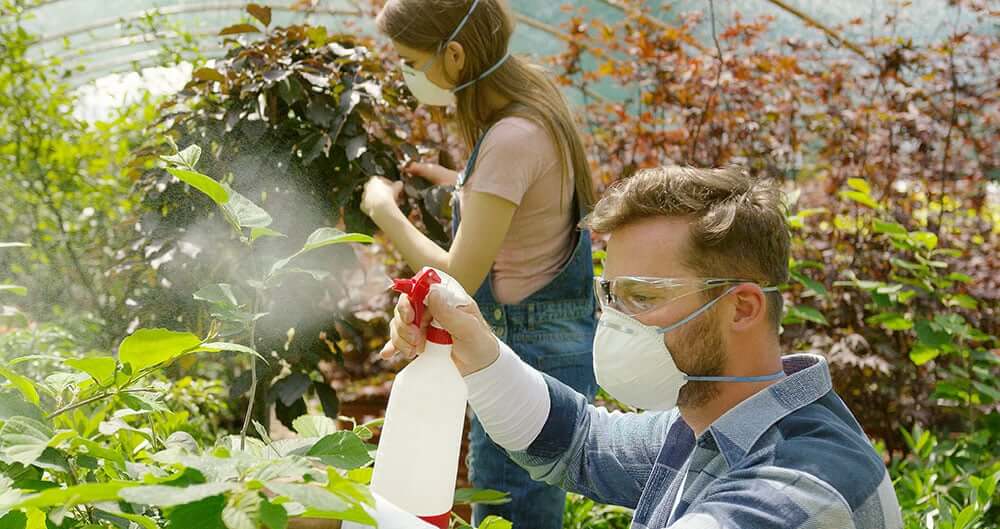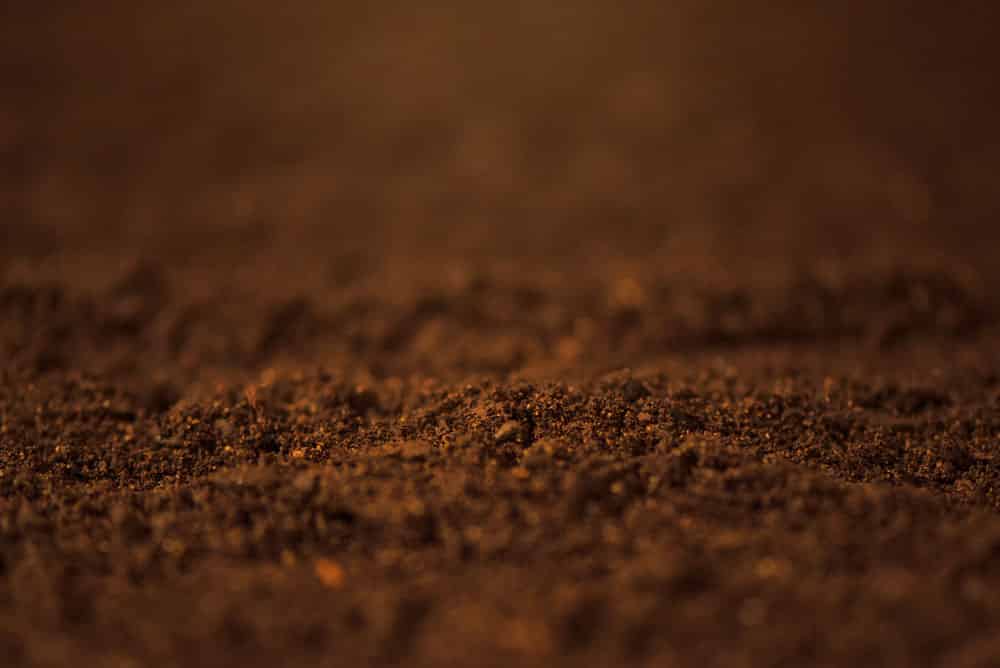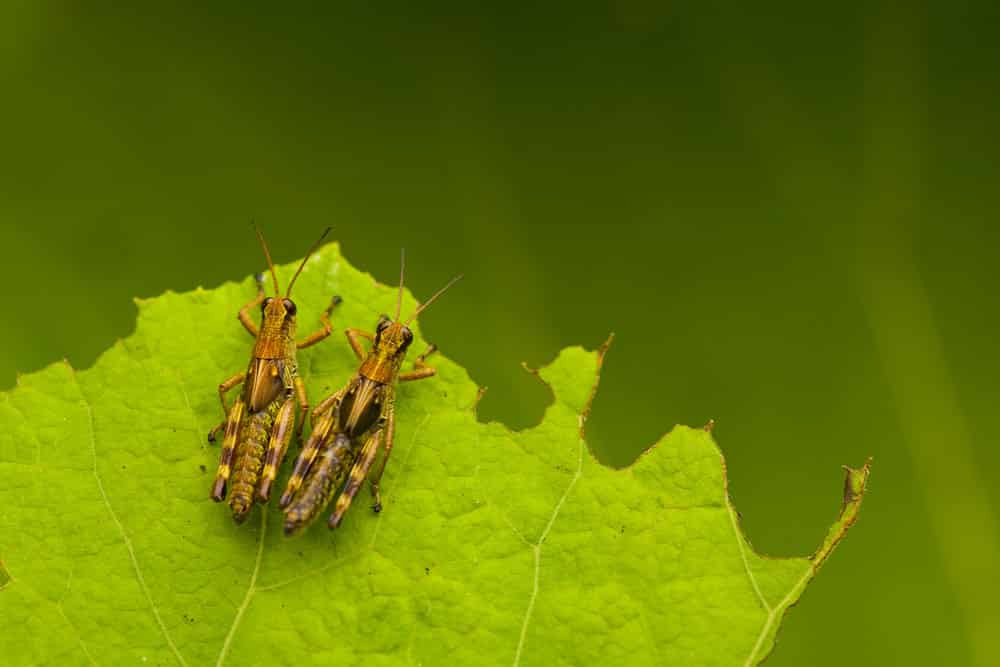You most likely have a bottle of hydrogen peroxide in your cupboard that you have used for cleaning the house or disinfecting. However, did you know that you can also use hydrogen peroxide in the garden?
If your plants are struggling to thrive, hydrogen peroxide could be just what they need. Hydrogen peroxide can help plants replenish at any stage of their life. It’s also great for the soil and serves many other purposes in the garden. Read on to discover why hydrogen peroxide and plants are a good match and how to use the chemical in your garden.
What is hydrogen peroxide?
Hydrogen peroxide is a colorless, chemical compound with the formula H202. Surprisingly, it only contains one extra oxygen molecule than water. This extra oxygen molecule, however, creates a strong and powerful oxidizer that’s capable of killing bacteria and viruses. This makes it a popular household cleaning product but it also has several other uses.

Is hydrogen peroxide good for plants?
Hydrogen peroxide is much more beneficial to plants than plain water. You may have noticed that plants respond better to rainwater than tap water. One of the reasons for this is that it contains more oxygen than tap water.
Interestingly, hydrogen peroxide replicates the natural substance found in raindrops that is so good for plants so when used, your plants will soak it up the same way they do with rainwater.
- Just like rainwater, hydrogen peroxide releases, and supplies oxygen to the plants and the soil.
- Hydrogen peroxide supports the health and growth of plants.
- The extra oxygen molecule in hydrogen peroxide is what encourages healthy root growth.
- It also eliminates soil fungus, spores, and mold.
Can hydrogen peroxide hurt plants?
Hydrogen peroxide will only hurt plants if the solution is not diluted down or is too strong. Another reason it could cause harm is by using too large quantities of the product. Therefore, using hydrogen peroxide on plants will not hurt them as long as the solution is sufficiently diluted, and you use it in moderation.
How much hydrogen peroxide for plants?
When using hydrogen peroxide on plants, for most purposes, you should use the same 3% solution that you use in the home. You can find this potency in most grocery stores.
How to use hydrogen peroxide in the garden?
How you use hydrogen peroxide in the garden will depend on what exactly you are using it for. Here are the most common ways to use the substance in your garden and how to do so effectively.

Treating soil
The first key to seeing your plants flourish is to create good, healthy soil for them to grow in. Your plants need enough space for air and nutrients to get through to the roots, so if the soil is too compact, oxygen and nutrients will not be able to get to your plants. This is one of the most common reasons why plants die.
Soil that is too compact can also lead to root rot, which will result in your plant roots decaying. This is why it’s vital to ensure your plant’s soil is of good quality.
Luckily, hydrogen peroxide can help if the soil is aerated. When hydrogen peroxide absorbs into the soil it interacts with it and breaks it down, releasing oxygen and nutrients. It then delivers that oxygen and nutrients to your plant’s roots. Furthermore, it will kill the bacteria caused by root rot and prevent it from recurring.
To treat soil with hydrogen peroxide:
- Use a 3% solution diluted down with water. Use the ratio of one part hydrogen peroxide and two parts water.
- Mix thoroughly then evenly pour the diluted solution into your soil all around the base of the plants and the roots.
Boosting your plants’ growth
Hydrogen peroxide can help your plants grow quicker and become stronger. You can boost their growth by either spraying the solution straight onto your plants or watering them with it.
- If you’re watering your garden with hydrogen peroxide, you may find it more economical to purchase a bottle of 35% solution and dilute it down. That way, you will only need to use a tiny amount of the chemical each time so it will last you a while.
- To dilute down 35% solution, mix 1 part hydrogen peroxide with 10 parts water. That’s about 2 teaspoons to 4 liters of water.
- Mix the diluted solution thoroughly, then water around the base of the plants.
- It’s recommended to use hydrogen peroxide every other time you water your garden rather than every time.
- If you want to spritz your plants for a quick hydration boost you can use a 3% solution. Dilute 1 teaspoon in a cup of water, mix in a spray bottle, then use to mist all over the plants.

Killing fungus and mold
Hydrogen peroxide’s antibacterial and antifungal qualities make it a great product for killing fungus and mold in the garden as well as in the house.
- To kill the fungus that’s getting to your plants, mix 4 or 5 tablespoons of 3% hydrogen peroxide with 1 pint of water in a spray bottle and then water the plants heavily.
- The key to killing the fungus and mold is to almost (but not quite) flood the plant so that the fungus flushes out.
- If killing fungus in potted plants, water them until water pours out the bottom of the pot. Then move the pot to a different location for the plant to dry and the fungus to die off.
- Once the fungus disappears, you can continue to spray the plant regularly to prevent it from returning.
Repelling insects
The strong oxidizing effect of hydrogen peroxide helps to repel insects and deter pests. Moths, fungus gnats, and sap-sucking insects are especially susceptible to the chemical.
A 1% hydrogen peroxide solution is effective enough for this purpose. Using a 1% solution is a safer and cheaper alternative to some pesticides as it does not contain any toxic chemicals that could harm pets or other wildlife.
Spray both the plants and the surrounding soil to keep insects away. Spray once a day for one week, then repeat the treatment weekly as it may not kill all the eggs.

Eliminating weeds
To use hydrogen peroxide as a weed and moss killer you will need to use a stronger concentration. Using a 10% solution on weeds is enough to kill them off. Of course, if you’re using this to kill weeds, be careful that the solution does not get on any plants or flowers. The best way to target the weeds is by using a spray bottle. If you’re battling weeds growing out of pavement cracks, you can pour the solution directly into the cracks.
Because this is a stronger concentration of the chemical, you need to ensure it does not come into contact with your skin. Therefore, you should always wear gloves and protective clothing when using a solution of this strength.

Sanitizing seeds and accelerating germination
If you usually soak your seeds in water before planting, try soaking them in hydrogen peroxide instead. Hydrogen peroxide will not only kill off any bacteria that could cause disease, but it will help them to germinate faster too.
- Use a watertight container to soak your seeds in a neat 3% solution
- Leave them to soak for about 4 hours. This gives enough time for any bacteria to die but is not too long that it will damage the seeds.
- Once they have soaked, thoroughly rinse the seeds in freshwater then leave to dry on a clean towel
- If you only want to accelerate germination, you can soak the seeds for just a few minutes. For this purpose, you can soak them in a sieve instead of a container.
Disinfecting pots and gardening tools
You may have used hydrogen peroxide to sterilize household items in the past, such as tweezers, thermometers, or toothbrushes. You can use it in the same way to disinfect your gardening tools and plant pots.
If you’ve had an outbreak of root rot or fungus in your garden, there’s no need to throw everything away and buy new. Sterilizing your tools and pots with hydrogen peroxide will kill off all fungus and bacteria, allowing you to continue to use them without the disease spreading.
To disinfect your gardening tools:
- First, wipe off any debris.
- Fill a bucket with 4 liters of water and two cups of hydrogen peroxide.
- Dip the metal parts of the tools into the bucket without the wooden or plastic handles coming into contact with the solution if possible. This will prevent degeneration.
- Thoroughly dry the tools after to prevent rusting.
You can also disinfect surfaces such as potting benches and greenhouse windows by dipping a cloth in the diluted solution and then wiping down the surfaces. Dry with a clean, dry cloth afterward.
How often to use hydrogen peroxide for plants?
In general, it’s recommended to water or spray healthy plants with a diluted hydrogen peroxide solution after every rainfall. If you’re treating diseased or infested plants, you should spray or water them daily for at least 5-7 days, and then weekly.

How to use hydrogen peroxide for indoor plants?
House plants tend to have healthy roots however, they still need access to plenty of oxygen through the soil. Using hydrogen peroxide on your indoor plants can help to increase the amount of oxygen they receive, keeping them strong and healthy.
When using hydrogen peroxide on houseplants, use a ratio of 1.5 to 2.5 teaspoons of 3% hydrogen peroxide to 4 liters of water.
Hydrogen peroxide can also save houseplants that have become waterlogged. When plants are overwatered, water fills the air spaces in the soil, cutting off the flow of oxygen to the roots. It may sound counterproductive but pouring the solution into your plant pot will flush out stagnant water and replace it with oxygenated water. The increase in oxygen will help to bring your plants back to life.
Can you mix baking soda and hydrogen peroxide for plants?
Baking soda is another powerful, natural cleaning agent that can be used on plants and is particularly good for killing fungus and mildew. Baking soda can be used on its own when diluted with water, or you can mix it with hydrogen peroxide for double the power. You can create a homemade fungicide for your plants by combining 4 liters of water with 5tsp of baking soda and 5tsp hydrogen peroxide.
Cautions and safety for hydrogen peroxide and plants
- It’s important to understand that with solutions stronger than 3%, there’s a possibility it could corrode the leaves and stems of your plants. Likewise, it can also kill useful insects that help to biodegrade matter in the soil such as earthworms and snails.
- To prevent unintended harm, test the effect of hydrogen peroxide on a plant first. Spray a small area of a leaf then wait about three days before spraying the rest of the plant to see if there was any negative reaction.
- When using a high strength solution such as 10%, if the product comes into contact with your skin, wash immediately and thoroughly with cold water.
- Store the chemical in a cool, dark place away from direct sunlight.
- Wear rubber gloves rather than gardening gloves. This is because many gardening gloves are not waterproof so the solution could soak through onto your skin.
As you can see, using hydrogen peroxide on plants is a safe and effective way to boost their growth, treat the soil, kill fungus, and repel harmful insects. Moreover, hydrogen peroxide does not just help plants but serves other purposes in the garden too.
Used responsibly and with caution, hydrogen peroxide will not harm your plants or the useful insects that help them grow. Follow the ratio advice for hydrogen peroxide and plants in this article and you will see your plants and garden start to thrive in no time.

